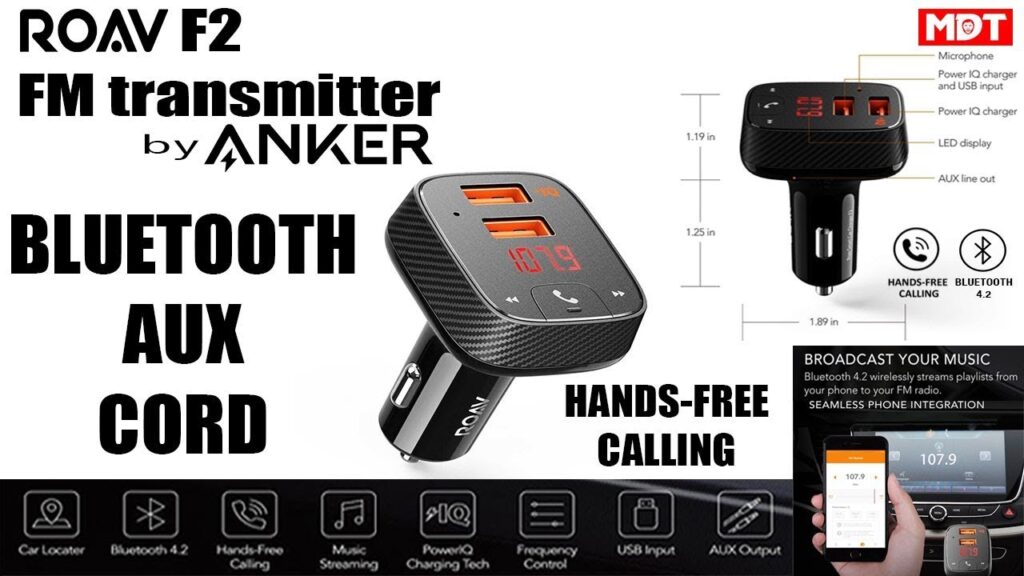As technology advances, so do the ways in which we consume music and audio content. One such device that has become increasingly popular is the FM transmitter. But what exactly is an FM transmitter and what does it do? In this article, we’ll explore the world of FM transmitters and shed light on how they work and their many uses.
An FM transmitter is a device that allows you to broadcast audio content from your phone, tablet, or other device to a nearby FM radio. Essentially, it takes the audio signal from your device and converts it into an FM radio signal that can be picked up by any radio within range. This means you can listen to your favorite tunes or podcasts through your car’s FM radio, a nearby stereo, or even a portable radio while on the go. But the uses of an FM transmitter don’t stop there. They can also be used for public events, such as outdoor concerts or sporting events, to broadcast commentary or music to a large audience without the need for speakers or a sound system.

What is an FM Transmitter?
An FM transmitter is a device that broadcasts radio waves from a specific audio source. It is used to transmit data or audio signals from one place to another. The most common use of FM transmitters is for broadcasting radio signals over a certain area.
What Does an FM Transmitter Do?
Transmits Radio Signals
An FM transmitter works by taking an audio signal from a source (such as an MP3 player or a microphone) and amplifying it to a level where it can be broadcasted over a certain area. The FM transmitter broadcasts the signal at a frequency that can be received by any FM radio within the broadcasting area. This allows users to listen to the audio signal on any FM radio in the given area.
Broadcasts Audio Signals
The audio signal that is broadcasted by an FM transmitter can range from simple voices to complex music. It is usually used to broadcast music from a radio station or a DJ. FM transmitters are also used to broadcast audio from television shows, podcasts, and other audio sources. Additionally, some FM transmitters can also be used to stream audio over the internet, allowing users to listen to audio from anywhere in the world.
Uses Multiple Frequencies
FM transmitters work by using multiple frequencies to broadcast audio. These frequencies can be adjusted to provide a better signal and better audio quality. The higher the frequency, the better the signal clarity and the louder the audio signal will be. Additionally, the multiple frequencies can be used to broadcast multiple audio signals at once, allowing users to listen to multiple audio sources at the same time.
Portable and Easy to Use
FM transmitters are also very portable and easy to use. Most FM transmitters come with a small antenna and can be plugged into any audio source. Additionally, many FM transmitters come with a remote control, allowing users to easily adjust the frequency and other settings from a distance. This makes FM transmitters a great choice for those who need to broadcast audio signals over a wide area.
Uses in Different Industries
FM transmitters are used in a variety of different industries. They are commonly used in broadcasting, as they can be used to transmit audio signals over a certain area. Additionally, they are used in the music industry, as they can be used to broadcast music from a radio station or a DJ. Finally, they are also used in the medical and emergency services, as they can be used to broadcast audio signals in emergency situations.
Frequently Asked Questions
An FM transmitter is a device that allows you to broadcast an FM radio signal from a source such as a portable audio device or a computer to a receiver such as a car stereo.
What Does an FM Transmitter Do?
An FM transmitter is a device that takes an audio signal and converts it into a radio frequency (RF) signal. This RF signal is then broadcasted through the air, allowing it to be received by a radio receiver. The receiver then converts the RF signal back into an audio signal, allowing you to listen to the audio on the receiver.
FM transmitters are commonly used in a variety of applications, such as broadcasting music from a portable audio device to a car stereo, broadcasting audio from a computer to a radio receiver, and broadcasting audio from a television to a radio receiver. They can also be used to broadcast audio signals from other devices, such as a microphone or a record player.
How Does an FM Transmitter Work?
An FM transmitter works by taking an audio signal from a source, such as a portable audio device or a computer, and converting it into an RF signal. This RF signal is then broadcast through the air, allowing it to be received by a radio receiver. The receiver then converts the RF signal back into an audio signal, allowing you to listen to the audio on the receiver.
The process of broadcasting an audio signal through the air using an FM transmitter is called FM radio transmission. FM radio transmission is used in a variety of applications, such as broadcasting music from a portable audio device to a car stereo, broadcasting audio from a computer to a radio receiver, and broadcasting audio from a television to a radio receiver.
What Are the Advantages of Using an FM Transmitter?
The main advantage of using an FM transmitter is that it allows you to broadcast an audio signal over a wide area without the need for cables or wires. This makes it ideal for applications where a traditional wired connection is not feasible, such as broadcasting audio from a portable audio device to a car stereo.
Another advantage of using an FM transmitter is that it is relatively inexpensive compared to other methods of broadcasting audio signals, such as using an AM transmitter or a satellite transmitter. Additionally, FM transmitters are relatively easy to set up and use, meaning that they can be used by anyone regardless of their technical knowledge.
What Are the Disadvantages of Using an FM Transmitter?
One of the main disadvantages of using an FM transmitter is that the audio signal is susceptible to interference from other radio signals. This can result in the audio signal being distorted or even completely lost in some cases. Additionally, FM transmitters have a limited range, meaning that they are only suitable for broadcasting audio signals over short distances.
Another disadvantage of using an FM transmitter is that the audio signal is not as clear as other methods of broadcasting audio signals, such as using an AM transmitter or a satellite transmitter. Additionally, FM transmitters are not as reliable as other methods of broadcasting audio signals, as they are more susceptible to interference from other radio signals.
What Are the Different Types of FM Transmitters?
There are several different types of FM transmitters available, including low-power FM transmitters, medium-power FM transmitters, and high-power FM transmitters. Low-power FM transmitters are typically used for broadcasting audio signals over short distances, such as from a portable audio device to a car stereo. Medium-power FM transmitters are typically used for broadcasting audio signals over medium distances, such as from a computer to a radio receiver. High-power FM transmitters are typically used for broadcasting audio signals over long distances, such as from a television to a radio receiver.
Cheap Bluetooth FM transmitter – does it work?
In conclusion, an FM transmitter is a device that allows for wireless transmission of audio signals from a source to a receiving device through radio waves. This technology has revolutionized the way we listen to music and communicate with others over long distances. Whether you are a music enthusiast or a professional broadcaster, an FM transmitter is an essential tool that allows you to share your message or entertainment with a wide audience.
As technology continues to evolve, the role of FM transmitters in our daily lives will only become more significant. From the transmission of emergency alerts to the broadcasting of live events, the uses of this remarkable technology are endless. As we continue to embrace the benefits of wireless communication, it is essential to understand the function and capabilities of FM transmitters, so that we can continue to harness their power to enhance our lives and connect with others in new and exciting ways.



